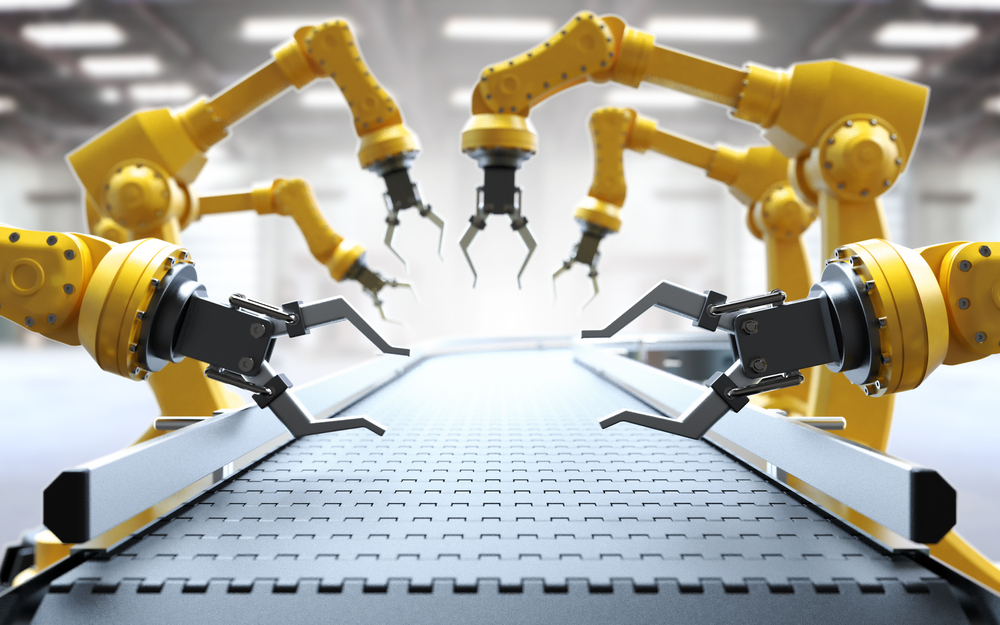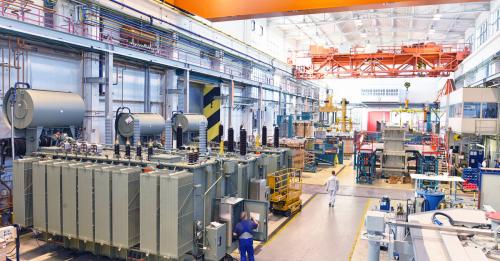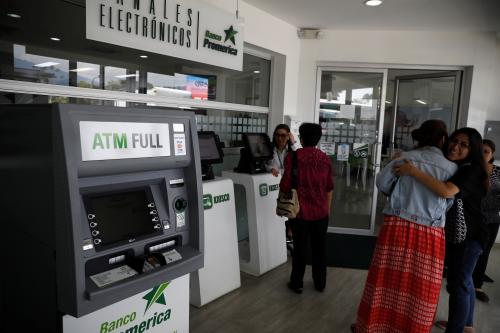There is understandable excitement about the impact that new technologies like artificial intelligence (AI) and robotics will have on our economy. In our everyday lives, we already see the benefits of these technologies: when we use our smartphones to navigate from one location to another using the fastest available route or when a predictive typing algorithm helps us finish a sentence in our email. At the same time, there are concerns about possible negative effects of these new technologies on labor. The Council of Economic Advisers of the past two Administrations have addressed these issues in the annual Economic Report of the President (ERP). For example, the 2016 ERP included a chapter on technology and innovation that linked robotics to productivity and growth, and the 2019 ERP included a chapter on artificial intelligence that discussed the uneven effects of technological change. Both these chapters used data at highly aggregated levels, in part because that is the data that is available. As I’ve noted elsewhere, AI and robots are everywhere, except, as it turns out, in the data.
To date, there have been no large scale, systematic studies in the U.S. on how robots and AI affect productivity and labor in individual firms or establishments (a firm could own one or more establishments, which for example could be a plant in a manufacturing setting or a storefront in a retail setting). This is because the data are scarce. Academic researchers interested in the effects of AI and robotics on economic outcomes have mostly used aggregate country and industry-level data. Very recently, some have studied these issues at the firm level using data on robot imports to France, Spain, and other countries. I review a few of these academic papers in both categories below, which provide early findings on the nuanced role these new technologies have on labor. Thanks to some excellent work being done by the U.S. Census Bureau, however, we may soon have more data to work with. This includes new questions on robot purchases in the Annual Survey of Manufacturers and Annual Capital Expenditures Survey and new questions on other technologies including cloud computing and machine learning in the Annual Business Survey.
While these new data are a promising step, there is still a need for a large-scale survey of technology use across multiple sectors of the economy. Congress should fund the U.S. Census Bureau to collect this data. The work that Census has done so far—for example by collecting data on the purchase and use of robotics in the manufacturing sector, via its Annual Survey of Manufacturing—provides a blueprint for how this can be done across other sectors of the economy. With better data, researchers will be able to measure the effects of these technologies on a range of issues including productivity, employment, training, inequality and regional competitiveness, and policy makers will be able to develop well-informed policy—or tweak, update, or eliminate existing policy.
Robots create and destroy jobs in manufacturing
Most studies of how robots affect the economy have used data published by the International Federation of Robotics (IFR), a trade association that collects data from its members. For example, Georg Graetz and Guy Michaels used the IFR data for 17 countries for the period 1993 to 2007 to show a positive link between robots and productivity. Daron Acemoglu and Pascual Restrepo used IFR data to study the effect of robot exposure on U.S. manufacturing jobs. They found that one robot per thousand manufacturing workers reduces the employment-to-population ratio by about 0.18-0.34 percentage points.
More recently, several studies have used data on robot imports to study the effect of robots on employment outcomes at firms. Using data from several French government sources, Acemoglu, Claire Lelarge, and Restrepo found that, in French manufacturing firms, those firms that adopted robots added jobs. This finding, which runs counter to the popular notion that “robots are coming for our jobs,” reflects the same positive relationship between robot adoption and jobs documented by researchers in other countries, including Canada, Denmark, and Spain. In other words, robots may be good for employment, at least at adopting firms in advanced economies. There is one big gap in the literature, however—we don’t yet have the data needed to do a similar study in the U.S.
Acemoglu, Lelarge, and Restrepo also found that manufacturing firms are likely to lose jobs when their competitors adopt robots. Moreover, they found that, on net, the negative effects on employment at other firms dominate the positive effects at robot adopting firms: even as some manufacturing firms grow and add jobs (those adopting robots), a larger number of manufacturing firms shrink and lose jobs. This same result has also been found in a study by Koch, Manuylov, and Smolka using data from Spain. Again, due to lack of data, we don’t know if the same effect occurs in the U.S.
These and other recent studies make it clear that the relationship between robots and jobs is nuanced, at least in manufacturing settings in advanced economies. There are still a number of outstanding questions about the relationship between robots and jobs, as there are for AI and other new technologies:
- Why don’t all firms adopt robots if they can, especially since those that don’t adopt robots seem to suffer employment losses? Does the relationship between robots and firm-level employment also hold in the case of other technologies, like AI?
- What happens to workers who lose their jobs at firms that don’t adopt robots? Do they end up working at other firms that adopt robots? Is the same true for workers at firms that don’t adopt AI?
- When firms that adopt robots add jobs, what types of workers do they hire, and are they well paid? What about the skills and wages for workers at firms that adopt AI?
More high-quality data from government statistical agencies will help researchers address these questions.
Recent U.S. Census Bureau measurement efforts
In addition to its important work surveying the population every ten years, the U.S. Census Bureau routinely surveys business establishments and firms about a range of issues, including revenues, expenses, wages, and others. The data collected from these surveys help government agencies to estimate GDP, employment, wage growth, trade deficits, and other factors to predict how current macroeconomic conditions and government policies are affecting the economy, workers, and households.
The U.S. Census Bureau has started measuring the use of robotics in U.S. establishments and firms through the Annual Survey of Manufactures (ASM) and the Annual Capital Expenditures Survey (ACES). It also measures the use of AI, cloud hosting services, robotics, and other technologies in U.S. firms through the Annual Business Survey (ABS). A recent video conference jointly hosted by New York University and the U.S. Census Bureau highlighted some of the early findings from these surveys and sought feedback for soon-to-be-released experimental data products from experts in the field.
In 2018, the ASM, an annual sample survey of approximately 50,000 manufacturing establishments, included three robotics-related questions. The survey asked about capital expenditures on robots, the number of new robots in 2018, and the total stock of robots in 2018. Funding for the cognitive testing of these questions—a necessary step to ensure that respondents understand the questions being asked—was provided by the National Science Foundation. Initial evidence from the survey indicates that manufacturing establishments that adopt robots tend to be larger (as measured by number of employees). Robots are used in most manufacturing industries across many U.S. states, but the states with the largest percent of manufacturing establishments using robots are in the industrial Midwest. Preliminary estimates show robot exposure rates—the share of workers working next to robots—exceed 30 percent in the Transportation Equipment, Primary Metal, and Plastic and Rubber Products industries.
The ACES, which surveys approximately 50,000 firms in a variety of industrial sectors about their capital expenditures, included a single question on robotics expenditures in its 2018 survey. The question mirrored the capital expenditure question asked of establishments in the 2018 ASM survey, but at the firm level (a firm can have multiple establishments). This survey similarly found that firms adopting robots tend to be larger (as measured by number of employees). The manufacturing sector had the highest total capital expenditures on robots and highest average by firm. Other industries with high capital expenditures on robots include non-store retailers and hospitals. The ACES is the only survey instrument that delivers data on capital expenditures in the U.S. from a representative sample of firms across all economic sectors.
In 2018 the ABS included a number of questions about technologies used at the firm. It asked whether firms use cloud-based services such as servers, data storage, data analysis, and customer relationship management, and business technologies such as machine learning, machine vision, touchscreens, and robotics. The big takeaways from this survey are that digitization has been widely adopted by all firms and sectors; diffusion is highest among the oldest and largest firms; and technology usage increases with size in all age categories. Cloud-based services have been less widely adopted but are used for many different functions. There is high variability in type and use by sector: manufacturing is a leading adopter of certain technologies, such as machine learning, machine vision, and robotics. The ABS also finds ample evidence of complementarities between technologies: advanced technology adoption is highly dependent on the adoption of key infrastructure. More detail about findings from the ABS are available in a recently released NBER publication.
It is important for the U.S. government to conduct more systematic data collection on the use of robotics and other new technologies in our economy. At a minimum, government data can be used to replicate the existing robot studies that rely on the IFR data. But the disaggregated firm-level and establishment-level data can also help us understand the conditions under which robots complement or substitute for labor and help policymakers design and evaluate the appropriate policy responses. Moreover, government data could help us understand whether the effects that are emerging in the case of robotics also hold for AI and other technologies.
More funding for more measurement
While the recent efforts of the U.S. Census Bureau are an important first step, there is more that could be done if the funding were available. In the late 1980s, the Census Bureau conducted the Survey of Manufacturing Technology (SMT). The purpose of the SMT was to measure the presence, use, and planned use of advanced technologies in the manufacturing sector. The Survey was administered in years 1988, 1991 and 1993 but was discontinued for funding reasons. Congress should provide funding to Census to conduct a modern, standalone version of the SMT. Ideally this new survey would be a short, annual, standalone survey of technology use at the establishment level across multiple industries in the economy. The survey would include questions about the use of specific technologies, such as robots, machine learning, cloud, e-commerce, autonomous guided vehicles, and others, and could be a simple “yes/no” question about whether the establishment has the technology or not. Questions about new technologies could be added in the future. It is important for the survey to be annual, so that changes in technology use could be tracked over time. An establishment level survey would allow for a granular analysis of adoption of a specific technology at that establishment on workers at that same establishment. In contrast, data that comes from firm level surveys make it harder to establish a causal link between adoption of a technology and effects on workers because firm level surveys aggregate information from all the establishments owned by the firm. In addition, since establishments are linked to a specific geography, an establishment level survey would allow for an analysis of how new technologies affect employment, inequality and other outcomes in different localities. The data could also be used to benchmark U.S. technological adoption relative to other countries.
Ideally, Congress would realize the value of such a survey and fund the Census Bureau to create it. The biggest challenge for such a survey is cost. There are two types of costs: the upfront costs of creating a new survey, which would primarily be the cost of conducting cognitive testing of the survey questions, and the recurring costs of administering the survey annually. These costs are hard to estimate and depend on the number of questions asked and number of establishments surveyed. The Census Bureau’s prior experience working with external researchers on the Management and Organizational Practices Survey (MOPS), which involved the creation of a standalone survey, may provide a useful benchmark on costs. The costs of developing and administering the MOPS survey was partially defrayed by use of grant funds from the National Science Foundation (NSF) from external researchers. This was also the case with the development of the robotics questions for the ASM, which benefited from a NSF grant. A similar model could be used to help defray some of the costs of a standalone technology survey.
There would be a variety of factors for the Census Bureau to consider when designing a new survey. The Census Bureau’s experience developing questions on the establishment level purchase and use of robots for the ASM should be useful. The cognitive testing of those questions, which is documented in Buffington, Miranda, and Seamans (2018), involved in-person interviews with plant managers to assess their understanding of the question and their ability to access the data necessary to accurately answer the questions about number of robots and capital expenditure on robots. The Census Bureau would need to do similar cognitive testing of all the questions in any new standalone survey. On one hand, the testing would be more involved than what was done for robot questions in the ASM as it would involve assessing the ability of managers across multiple sectors of the economy to answer the questions. On the other hand, the testing may be easier as it would involve a single question for each technology—either the establishment has it or not—rather than requiring an estimate of capital expenditures on those technologies, as was done in the ASM.
There would be multiple benefits to a standalone survey of technology. The survey would allow researchers to identify sectors and regions of the economy that are being impacted by new technologies. When linked with other data sets, researchers would be able to assess the effects of these technologies on workers and firm level outcomes such as productivity, growth, or firm exit. For example, the data could be linked with establishment-level data from the Annual Survey of Manufacturers to study the effect of these technologies on establishment productivity. Or the data could be linked to firm level occupational data—such as the micro-data from the Bureau of Labor Statistics (BLS) Occupational Employment Survey, which is confidential but available to BLS-approved researchers—to identify effects of technologies on workers by occupation. An additional benefit of such a survey is that it may help the BLS improve measurement of multifactor productivity—a measure of how efficiently our economy transforms inputs, including labor, capital, technologies and know-how, into outputs. Accurate productivity statistics help the government assess the overall well-being of the economy and decide when fiscal or monetary policy action needs to be taken to address slowing growth. Some have argued that multifactor productivity suffers from mismeasurement, which may stem in part from not being able to account for the role of new technologies. See Byrne, Fernald, and Reinsdorf (2016) for a useful review of the potential role of mismeasurement.
In summary, while there is excitement about the impact that new technologies like artificial intelligence and robotics will have on our economy, we need to do more to measure where and how these technologies are being used. A good place to start would be additional funding from Congress to the U.S. Census Bureau to conduct an annual standalone survey of technology use across establishments in the U.S. economy—in short, it’s time for a Robot Census.
The author did not receive financial support from any firm or person for this article or from any firm or person with a financial or political interest in this article. He is currently not an officer, director, or board member of any organization with an interest in this article.





